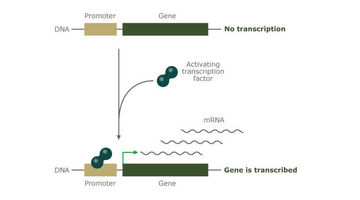Transgenic plants can provide valuable information to apple breeders about individual traits. This information can help in the design of DNA markers, which can be used to select breeding parents – this can speed up breeding and make it more efficient. Transgenic research is strictly regulated to ensure that all transgenic material is contained.
In this video Plant & Food Research’s Andy Allan and Richard Espley explain how genetic research is regulated in New Zealand by the Environmental Risk Management Authority (ERMA). Note: ERMA was disestablished in June 2011 and its functions were incorporated into the Environmental Protection Authority (EPA). MAF (Ministry of Agriculture and Forestry) became part of the newly formed Ministry for Primary Industries in 2012.
Transcript
Andy Allan (Plant & Food Research)
The experiments that I do on moving a gene into an apple, for example, has to be done within a contained laboratory. So the regulations are very tight. The greenhouse is contained and everything that leaves that greenhouse is either destroyed or audited through to a laboratory somewhere on the site. And it’s only information which is allowed to pass out of those contained facilities. ERMA looks at our applications to do various experiments and checks they are all safe and relevant, and MAF, another independent authority, audits our work and makes sure that we are doing everything right.
Richard Espley (Plant & Food Research)
So all the transgenic material on this site is contained within containment facilities like this, and we comply to very strict environmental and biosecurity legislation. So when we go in through that door, we will have to put overshoes so we don't take anything in but more importantly so that we don't bring anything out with our shoes, because those overshoes will stay in the glasshouse.
It’s particularly important with plants with very small seeds like Arabidopsis to stop those seeds escaping from a containment facility. It’s not such a problem with apples because they have very big seeds, contained in very big fruit, so very unlikely to get out into the environment, but we still make sure that all the apple seeds that are produced in there are autoclaved, that is to say completely sterilised.
And if the trees were flowering, we would also put hats on so that we are not taking any pollen out, for example, in our hair. So it’s all aimed at making sure that no material escapes from the glasshouse, and every plant in the glasshouse is monitored from that seedling stage right through to the time that it’s disposed of, and it’s disposed of by being autoclaved, so it’s completely sterile and the material can then be removed.
Acknowledgements
ERMA
123RF
Carrie Norin
Additional footage from Plant & Food Research



